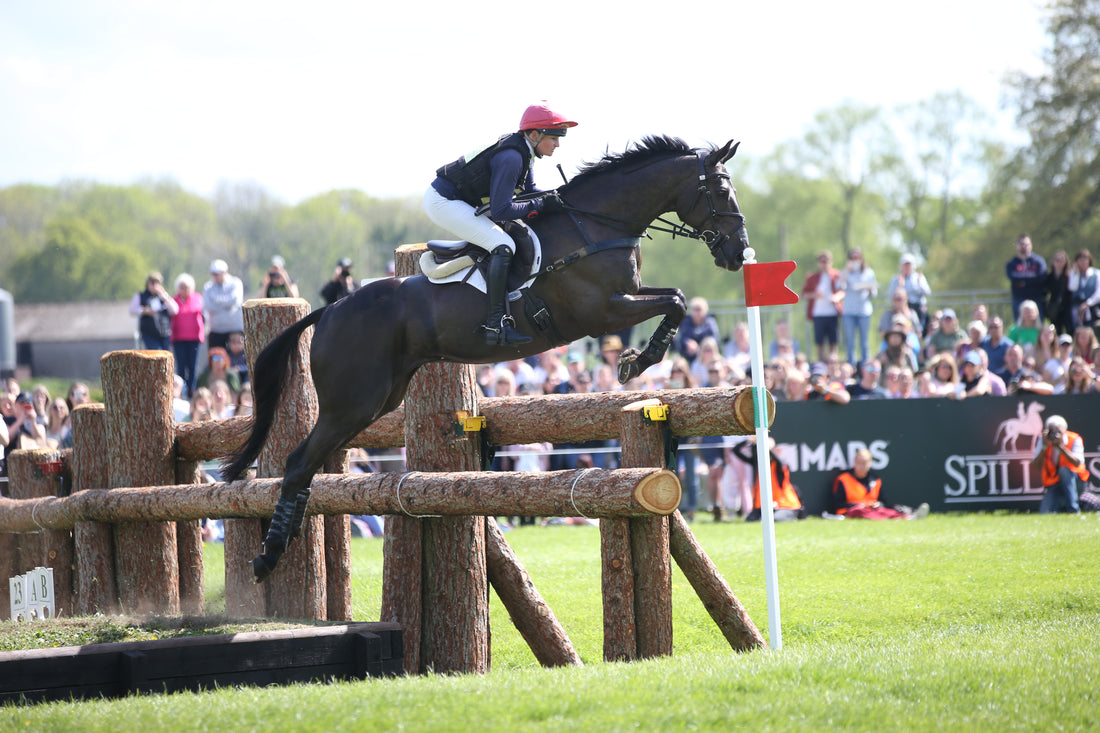Feeding The Older Performance Horse

Written by: Briony Witherow MSc RNutr. FHEA
Oldie but a goodie
The top 20 finishing horses at this year’s Badminton Horse Trials had an average age of just under 14 years old, with 25% of these aged 16 or over. Inspired by this impressive show of longevity, it seemed only right to take a closer look at the special challenges the older performance horse may face. While much of the success of these older athletes will lie in their production and genetics (and more besides), once they have reached the top levels of their discipline, how can we sustain them?
All-round management is crucial, but in addition to this, nutritional support can help these experienced athletes to stay at the top of their game for longer. From a feeding standpoint, the primary change as the horse ages is the efficiency of the digestive tract in utilising certain macro and micronutrients. Throughout the digestive tract, from the teeth all the way through to the absorption capacity in the intestine, it is typical to see a decline in function. The implications of this can be far reaching; poor dentition resulting in larger food particles entering the digestive tract, or simply reduced intake altogether; intestinal scarring from parasite damage decreasing protein, vitamin, and mineral absorption; or a change in the profile of the microbiome resulting in a decreased production of vitamins (most notably B and K). The culmination of these changes can, over time, see the older horse struggling to maintain bodyweight, muscle mass, energy levels and ultimately lead to poorer performance and recovery.
It is important to note that the age this decline in digestive efficiency occurs will vary depending on the individual – hence why there is no specific age to start feeding a ‘senior-specific ration’. The decision as to when an older horse needs additional support should be gauged through regular monitoring of bodyweight, body and muscle condition, as well as general health.
The challenges of age-related issues should be approached holistically, for example, lean body condition and adequate muscling are both essential elements for promoting healthy joints. Furthermore, the management of our older performance horse must focus on quality of ingredients, particularly protein and fibre, and providing additional support for the digestive system, musculoskeletal system (joints and muscles), immune status and recovery.
Top tips for supporting the older equine athlete include:
- Provide good quality fibre that is tailored to dental health, bodyweight and condition. Watch out for early signs of dental decline such as quidding and reduced appetite.
- Maximise fibre digestion by providing a feed or supplement with additional gut support – look out for ingredients such as probiotics (yeast such as Saccharomyces Cerevisiae) and prebiotics (such as Fructo-oligosaccharides (FOS)).
- Take a holistic approach to the musculoskeletal system - set the horse up for success by removing any potential confounding factors such as excess weight and condition and implementing a good fitness plan to help to reduce risk of bone and muscle injury.
- Check in with body condition and muscle condition regularly to assess whether the diet is adequately meeting energy (calorie) and protein requirements.
- Protein quality is more important than quantity – a good indication of quality can be inferred either from declared lysine quantity or (as lysine levels are not mandatory to declare) by looking for key ingredients that provide good quality protein such as soya bean meal high up on the ingredients list. You can also look to boost the protein quality (amino acid profile) by supplementing the base ration.
- Look for joint supplements containing ingredients such as MSM which is both anti-inflammatory and helps aid recovery. Glucosamine, Chondroitin Sulphate as well as good sources of omega 3 oils (such as Cod Liver oil) may also be of benefit ‘higher-mileage’ joints where a certain amount of ‘wear and tear’ is assumed.
- Ensure the horse is receiving a balanced ration of micronutrients (vitamins and minerals) including additional antioxidants (such as vitamin E and C) to safeguard muscles against damage.
- Manage the older sports horse’s schedule to maximise recovery and therefore subsequent performance. Support this with well-timed electrolytes, as discussed in the previous blog.
Delivering the support detailed above can be achieved in numerous ways depending on the existing ration. A combination of supplements can be used to target specific issues such as Transvite Excel for digestive support or Muscle Maker for improving the amino acid (quality protein) profile. Alternatively, combination products such as Equine OAP combines many of the areas mentioned above in just one product.
